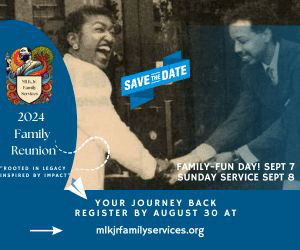Employment
By Nicole Polite

Nicole Polite
The workplace dynamic has continually evolved, influenced by shifting societal values, economic landscapes, and generational ideologies. Views on work can be broadly categorized into two philosophies: live-to-work and work-to-live. Understanding these perspectives is essential as they shape the environments and cultures that define our working lives.
Traditional Workplaces: the Live-to-work Ethos
Traditionally, a significant divide existed between work and personal life, marked by strict hierarchies, rigid schedules, and minimal flexibility. This structure, predominant among Baby Boomers and Generation X, is deeply rooted in a post-World War II economic boom that prized efficiency, stability, and conformity. In such settings, employees often found themselves adhering to exhaustive norms and sacrificing personal priorities for work commitments, epitomizing the live-to-work doctrine.
The typical workplace during this era was characterized by a top-down management style, where decisions were made by high-level executives and permeated downward, often ignoring the needs of lower-tier employees. These practices shaped an environment where individual creativity and innovation were stiflingly restricted, mirroring the mechanical precision of assembly-line work rather than fostering a nurturing and progressive workplace.
Modern Workplaces: the Work-to-live Approach
Conversely, the modern work philosophy, favored by Millennials and Generation Z, champions flexibility, autonomy, and a balanced integration of work with personal life. The 2008 Great Recession shaped the worldview of these younger workers, many of whom watched as their parents struggled with job loss, financial instability, and economic uncertainty despite the years spent working in corporate jobs and traditional career paths.
That experience left a mark on these modern employers and workers and instilled in them a strong desire for financial resilience, job security, and a skepticism toward traditional corporate structures. They realized that their parents’ career paths, work approach, and strict adherence to norms weren’t a surefire guarantee of success, security, and wealth.
Most importantly, they didn’t want to feel the pain of loss and unfulfillment they saw in their parents’ eyes as once esteemed and revered institutions, systems, and structures crumbled around them during the recession. They made it their goal to perpetuate work environments and work in jobs that satisfied their desires, met their yearnings, and fueled their passions. They forged career paths that offered some financial stability and a sense of purpose and autonomy, such as entrepreneurship, freelancing, or pursuing work in socially conscious organizations.
Some modern workers would rather not have a 9-to-5 job. They want control over their schedules, the ability to choose projects that align with their interests, and the freedom to work with like-minded colleagues. The possibility of remote work, facilitated by advancements in technology and software platforms like Zoom and Google Meet, allows these workers to enjoy the benefits of working from anywhere, at any time, and for any company.
Many modern workers are also gig workers; about 16% of American workers have earned an income from gig work such as ride sharing, food delivery, or freelance services. This type of work typically has a lower barrier to entry and offers the kind of flexibility that workers crave today. The emphasis is on working to live, where employment is a means to enjoy a preferred lifestyle rather than the sole focus of one’s existence.
Bridging the Generational Divide
The challenge arises when these two distinct mindsets interact within the same workplace. Conflicts can ensue when a traditional employer hires a modern-thinking employee, or vice versa. Such clashes can lead to misunderstandings, stress, and a decrease in productivity, highlighting the need for a more integrative approach to workforce management.
In an ideal workforce, employers would adopt a more inclusive and flexible mindset that accommodates diverse work philosophies. This involves creating policies that respect traditional values of structure and stability, while also embracing the flexibility and innovation that modern workers bring. Ensuring clear communication and mutual respect among employees can foster an environment where varied work values coexist harmoniously.
The Road to a Symbiotic Workplace
The future of work doesn’t have to be confined to a choice between living to work or working to live. Instead, it can be a blend of both philosophies, taking the robustness of traditional structures and merging them with the flexibility and innovation of modern approaches.
My experience in talent recruitment has shown me that both employers and employees seek a productive, symbiotic relationship that supports individual and collective growth. To achieve this, it’s crucial to go beyond merely matching skills and qualifications. We must understand and integrate the nuanced preferences, goals, and aspirations of the workforce.
Creating such a workplace requires an ongoing dialogue between different generations and mindsets. It needs adaptation and compromise from both sides to forge a solid partnership that withstands the tests of time and challenges of a changing world. Only through such integrative efforts can we build a workforce that not only bridges the gap between generations but also thrives on the diverse strengths each brings to the table.
With a balanced approach, we can ensure that both the live-to-work and work-to-live philosophies contribute positively to our collective professional landscape, leading to increased satisfaction and productivity across the board.
Nicole Polite is CEO of the MH Group, a staffing and recruiting firm in Massachusetts and Connecticut, and the author of Expectations Aligned: Forging Better Paths for Employers and Employees to Meet in the Middle, which will be released on Sept. 16.





